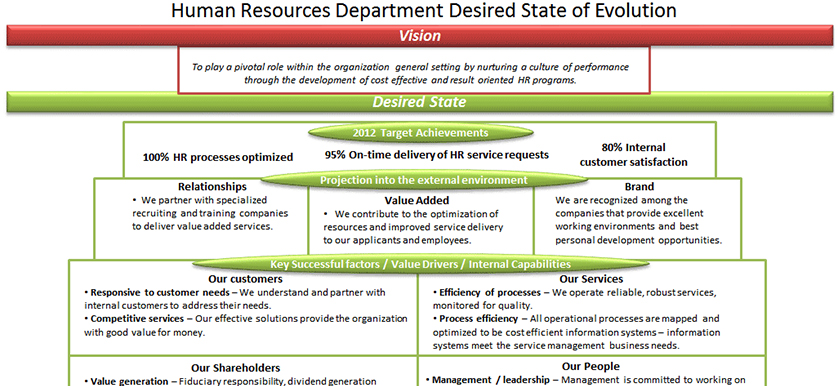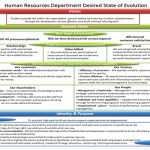The importance of The Desired State of Evolution
What is The Desired State of Evolution?
It is a performance management tool used to integrate the strategic statements of an organization. The Desired State of Evolution (DSE) closes the gap between mission and vision, by integrating the company’s aimed progress in the middle of the pyramid.
At what organizational level can The Desired State of Evolution be used?
The DSE can be customized and used both at the organizational and departmental level. Departments and teams are able to develop their own version, based on the one adopted by their organization. In this way, they can benefit from bringing an additional level of clarity and specificity to their own working environment.
What’s the purpose of DSE?
The purpose of the DSE is to provide a clear image of the company`s / department’s desired progress.
Are there any benefits to using a DSE?
Yes, there are a number of benefits, out of which, the most important are:
- It clarifies what the company wants to achieve;
- It identifies the company’s capabilities, value drivers and competences;
- It illustrates the course of actions taken in order to achieve the company’s vision.
Are there any challenges in developing and using the DSE?
Yes, there are. Some of these challenges include:
- Lining up the DSE with the company’s strategy;
- Aligning the DSEs across the company (the organizational with the departmental ones);
- Designing a simple, yet not simplistic, DSE.
In theory, the differences between mission and vision are clear, but in practice there are many cases of misuse and confusion. Moreover, there is a high level of dynamism in using mission and vision statements, but a deficiency of instruments in practice to facilitate their linking to other concepts.
Over time, there were several conceptual models proposed, like the ones made by Raynor (1998) and Stuart (1999), but none of these conceptual models developed a graphic representation that linked the concepts in practice. The Desired State of Evolution makes that link and facilitates the translation of the company’s strategy in practice.
References:
- The KPI Institute (2014), Certified KPI Professional Training Course
- Figge, F., Hahn, T., Schaltegger, S. and Wagner, M. (2002), The sustainability balanced scorecard – linking sustainability management to business strategy
- Armitage, H. M. and Scholey, C. (2006), Using strategy maps to drive performance

Tags: strategic planning, Strategy






